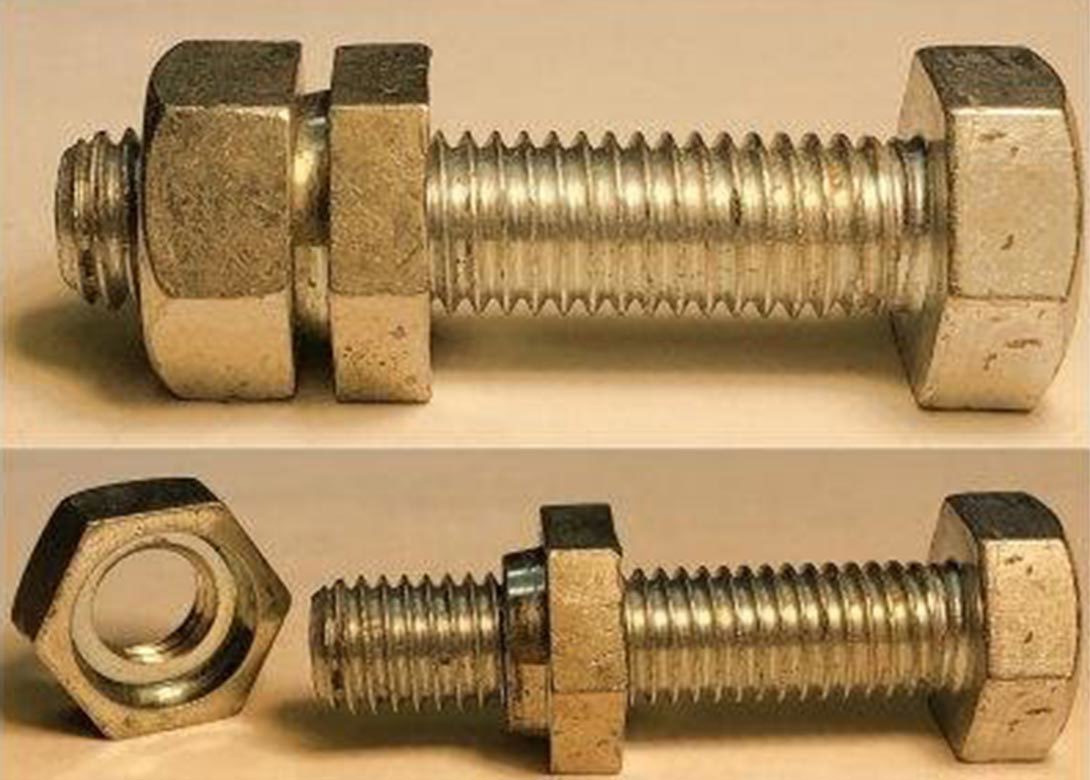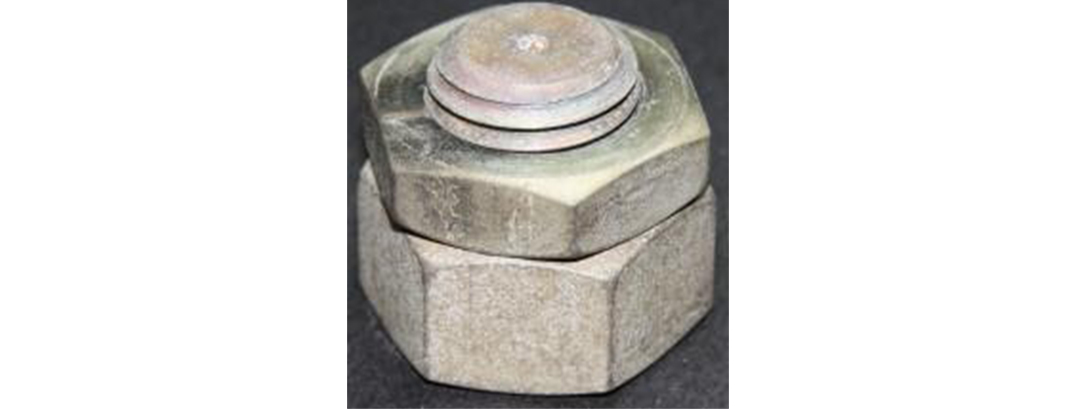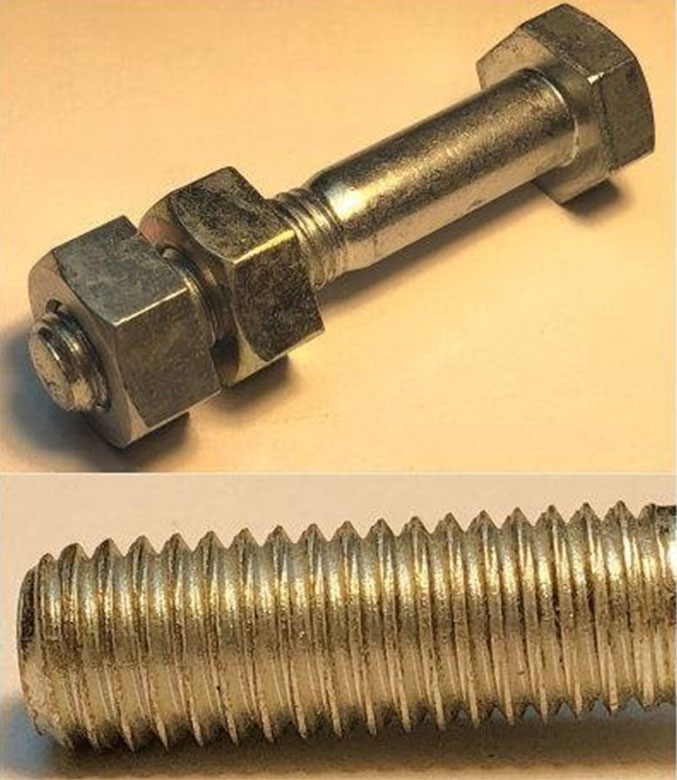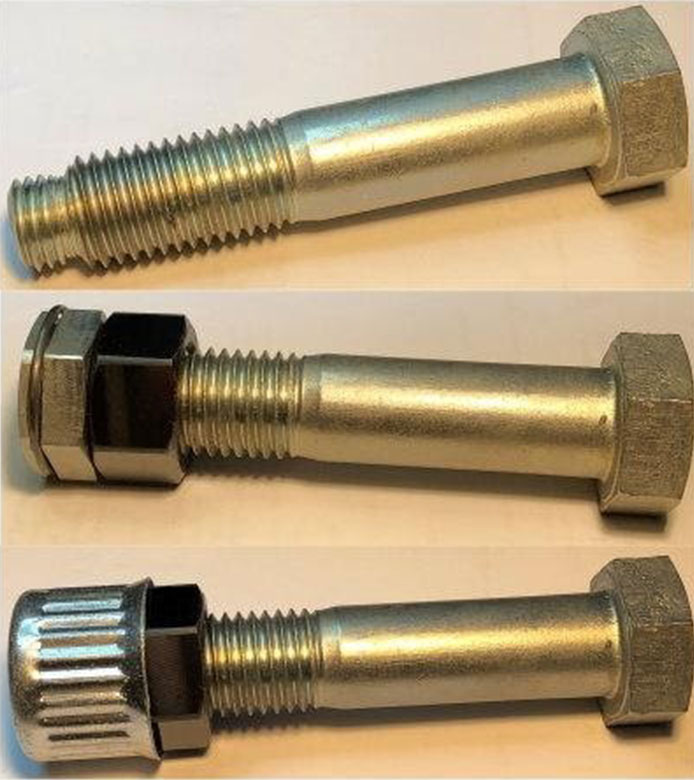

Here, Bill Eccles from Bolt Science, explains the benefits of a two nut design bolted joint and how it can be provide a more reliable performance in installations, as part of a new series of exclusive articles published on FastFixTechnology.com
Many types of old machinery have two nuts on the bolts. A thin nut is frequently used in these applications. Sometimes the thin nut can be observed below the standard thickness nut and on other installations, it’s on top.
Although it may seem counterintuitive, the thin nut should go next to the joint and not be put on last. In other applications, for example on column attachments, two standard thickness nuts are frequently used.
In order for the locking to be effective, the thin nut should be placed on the bolt first, tightened to between 25% to 50% of the overall tightening torque. The second (thick) nut is then placed on the bolt and the thin nut held to prevent rotation by a spanner whilst the thick nut is tightened to the full torque value.
More details about the correct approach when using two nuts is available in the article on the Bolt Science website.

It is easy to get the two nut locking system wrong, by for instance, by applying too much or too little torque to the thin nut. Proprietary designs, some first patented over one hundred years ago, using two nuts for locking have been developed with the intention of ensuring a more reliable locking performance. Some of the solutions developed are novel.
The symmetry bolt was an innovative idea in which a right hand and left hand thread was produced on the same bolt shank. The right hand thread (most threads are right handed) had a standard pitch (for example for a M10 bolt, a pitch of 1.5mm) with the left hand thread being half that of the right hand thread (for a M10 bolt, a pitch of 0.75mm). The right hand nut was placed on the bolt and tightened first following by the left hand nut that was only partially tightened.

Since the threads are of opposite hands, the main (right hand) nut cannot be removed without first removing the left hand nut first. The more the right hand nut attempts to rotate, the more the left hand nut would be tightened.
A problem with the design was that when someone came to disassemble the fastener, the normal reaction is to untighten in the anti-clockwise direction resulting in attempting to tighten, rather than untighten the nut. Since the thread was so fine, this can easily result in the thread stripping. This was attempted to be resolved by using a right hand thread having a pitch half that of the main thread. Although it was innovative, the design was not a commercial success.
A two nut design that has been a commercial success is the Hardlock nut. The first nut is tightened onto a bolt using a torque value to fully tighten it. The nut has a conical section whose axis is eccentric from the axis of the thread. The second nut, having a matching conical depression, is tightened onto the first nut. Since the axis of the conical section is eccentric from the thread axis, a sideways force jams the nuts onto the thread. The Hardlock nut is one of the few locking devices that will lock the nut to the bolt thread even if the bolt is not tightened.

Another two nut design in present use is the Tracksure/Wheelsure product. The special bolt which is used has a smaller left-hand on the end. The main nut is tightened fully and then locking nut, having a left-hand thread) is applied until it tightens against the original nut. A steel locking cap pushes down over both the original nut and the locking nut, the cap being held in place with a spring clip.

Like the Hardlock nut, an advantage of the Tracksure product is that it is not dependent upon the bolt’s preload, this is an important attribute on some track applications.
A plain nut will not self-loosen if the bolt is tightened correctly and the joint designed appropriately. That is, the joint is designed so that it will not move or separate when service loading is applied. Software, such as the BOLTCALC program, can assist in ensuring that this is the case. When the loading on the joint is uncertain, or occasional overloads are encountered, a locking device can be useful in preventing self-loosening. If the joint continually moves under the service loading, even with a locking device fitted, the bolt/joint will have a finite life due to fatigue and wear issues.





